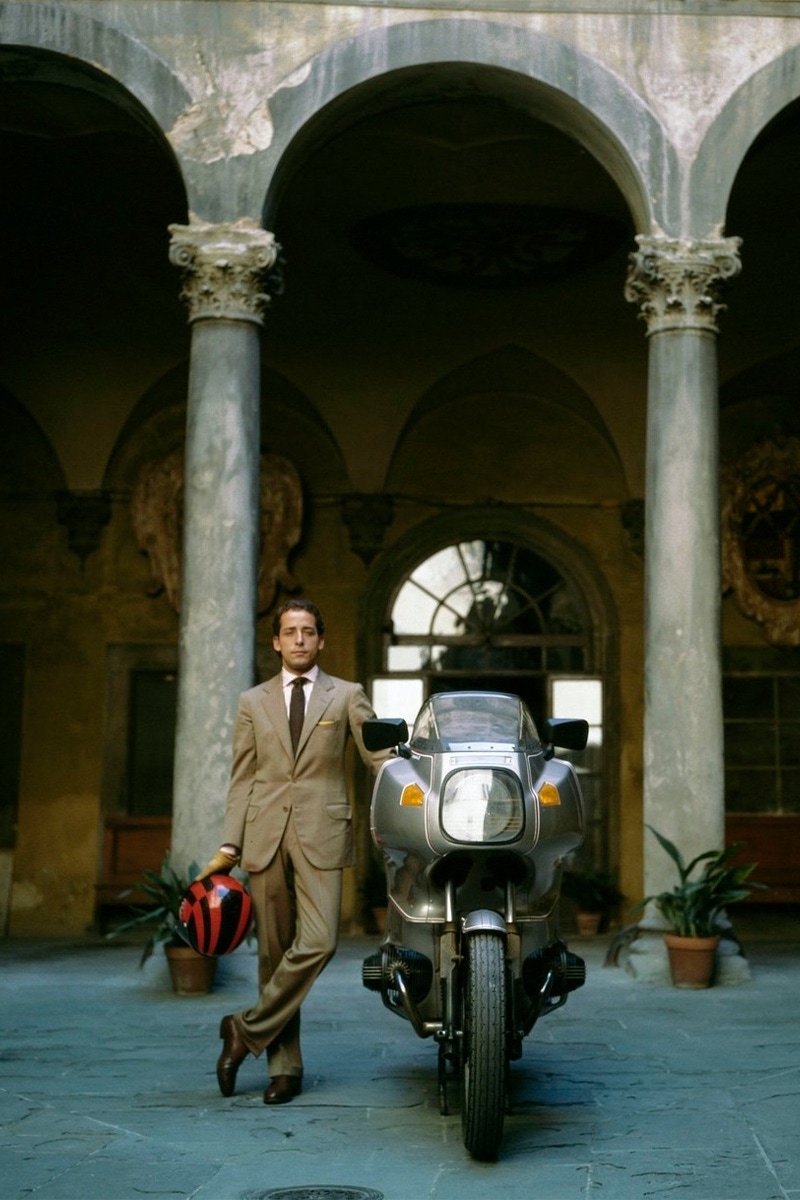The Rake Dispatch: Visiting Florence during Pitti Uomo

There is no better time to visit; as an international atmosphere takes over, and the opportunity to share drinks and dinner with fellow menswear-enthusiasts becomes a daily part of your routine in between visits to the fair. Florence meets expectations…but in other ways, it exceeds them too. Having spent years revisiting Pitti Uomo, The Rake has discovered an alternative, rakish side to Florence that still seems preserved outside of the tourism bustle. It is worth seeking out the restaurants and bars that are slightly off of the beaten track - as well as indulging in the classic addresses that will flood your social media feed. This is where to go to impress your new friends after a day of strolling around the Fortezza da Basso.



WHERE TO STAY
The opulent Saint Regis has become a hallmark of luxury in Florence. This is where the well-heeled rest their heads for the night—as the accommodating staff welcome celebrities, politicians, and artists. It is also located ideally beside the main sights, and fifteen minutes from the Fortezza. If distance isn’t an issue, The Belmond Hotel group offers a tranquil site in the nearby hamlet of Fiesole. The Villa San Michele is a 15th century building with modern amenities, and is near forest trails should you want to escape the crowds when you’ve returned from the Fortezza. For those of you who require the presence of fashion at all times, the staff at the luxurious Ferragamo-owned Hotel Lungarno are uniformed in the brand’s latest collections, and it includes a sophisticated bar that stares out at the river Arno.
WHERE TO EAT LUNCH
Paninis are an important part of Florentine life, and since you will be on the move for most of your time at Pitti, it helps to know where to grab a quick lunch. Queues stretch around the corner at All’Antico Vinaio, near the Palazzo Vecchio, for their viral sandwiches made using a local flatbread called schiacciata. It is a rite-of-passage, but there are other outlets favoured by the Florentines. In the Sant’Ambrogio district—considered the most local of the city’s central neighbourhoods (it is also the most common place to hear the classic Florentine dialect)—the Semel sandwich shop is open for only a few hours during the day, sourcing their meat, fish, and cheese from the nearby market, and offering full-bodied house wines to take-away with your panini. Sant’Ambrogio, and particularly its food market, is a lesser-visited, but increasingly more fashionable, part of town to find lunch—and it’s unlikely you will run into as many tourists. Another great option near the Fortezza is Spera, where the female pizzaioli (and one-time world champion) serves thin, but generously topped, pizzas in an informal setting, as well as free-flowing jugs of Tuscan wine.





WHERE TO EAT DINNER
The king of Florentine cuisine is the salty, fatty, and succulent Bistecca steak. The city is blessed with romantic trattorias to make dinner plans and indulge in Bistecca, and while the usual addresses will be filled over the week, locals prefer to visit Il Latini, a trattoria recognised by the Michelin Guide. It has an old-world charm and a broad selection of Tuscan wines. Apart from the rustic trattorias, there are Michelin-starred restaurants that are essential for your visit—should you be able to reserve space. Enoteca Pinchiorri is one of six addresses with three-Michelin stars to its name, providing innovative twists on Tuscan classics. But if you have time to leave the city centre during your stay, we recommend Arnolfo in the picturesque hill town of Col di Val D’Elsa. Ingredients are sourced locally, and it pairs well with a day trip to the town of Saint Gimignano, with its unique skyline of Medieval towers.
WHERE TO ENJOY A NIGHTCAP
Once you have ticked a Negroni at Harry’s Bar from your to-do-list, Florence offers even the most experienced barfly a whole selection of addresses. The bar experience depends on the neighbourhood, with Sant’Ambrogio and San Frediano offering alternative spots that spill out into the streets. The area around the Duomo, or artisanal Oltrano, includes a mix of pubs and luxury establishments—like the sixties-inspired Mysterium. For a 1920s art-deco ambiance, we also suggest Bitter Bar, where you can enjoy cocktails against the sound of live jazz music. As you move through the city, the perceptive among you will notice the Buchetta doors—17th century Florentine wine portals where bottles were once sold. During the pandemic, these made a brief return for locals to pick up bottles. Some still list wine prices from their founding more than three centuries ago. We also recommend Sabor Cubanos, near San Lorenzo market: replicating the architecture of Havana inside (it is owned by a Cuban husband-and-wife who sometimes perform songs on the piano), they draw crowds for their famous Mojitos, as well as the vintage decor and bar. We have mentioned the Hotel Lungarno in our places to stay, but even if you are not booking a room, the bar itself is among the most elegant in the city. It is an ideal place to enjoy a Martini late into the evening, with the palazzos and Ponte Vecchio glowing in a mustard light from the waterfront terrace.It can be hard to know where to start with Florence, but with our rakish recommendations above, you ought to be well-fed, watered, and rested by the time you depart from this January’s Pitti Uomo.



